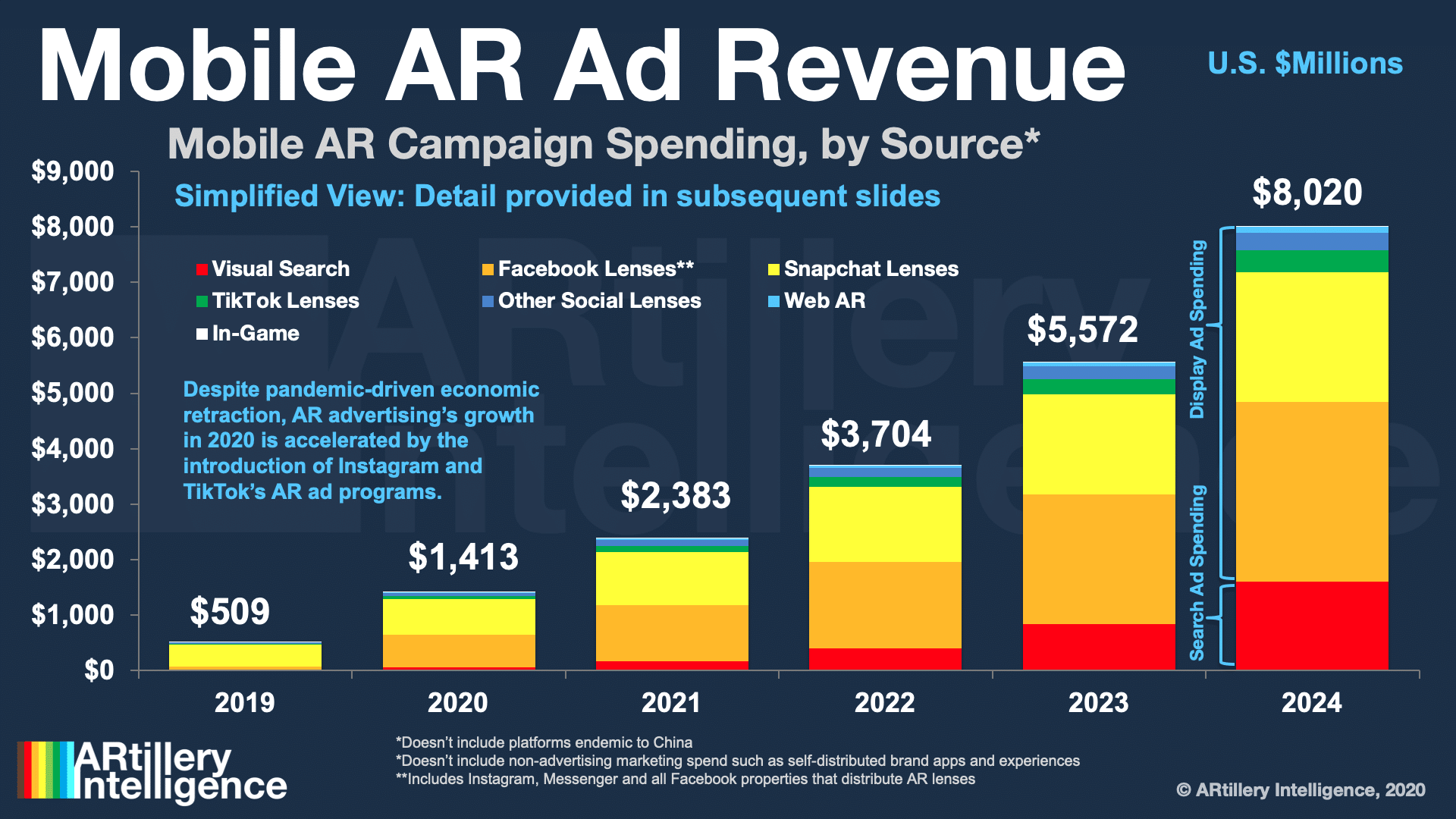
AR continues to evolve and take shape as an industry. Prominent sectors include industrial AR, social, gaming, and shopping. But existing alongside all of them is AR advertising. This includes paid/sponsored AR lenses that let consumers visualize products on “spaces & faces.”
Advertising is one of the most lucrative AR subsectors, on pace to reach $1.41 billion this year and $8.02 billion by 2024. These figures measure the money spent on sponsored AR experiences with paid distribution on networks like Facebook and Snapchat.
As our research arm ARtillery Intelligence examined in a recent report on AR advertising, adoption drivers include brand advertisers’ growing affinity for AR. Its ability to demonstrate products in 3D resonates with their creative sensibilities, transcending common 2D formats.
To continue the narrative and “show rather than tell,” part II of that report features case studies that map to various stages of the consumer purchase funnel. What do AR ads look like today, what’s the concrete ROI, and what are strategic takeaways for campaign execution?

High-Reach Results
Starting our analysis at the top of the consumer-purchase funnel, what are best practices in using AR to amplify brand messaging or product awareness on a large scale? Who are the exemplars? What are the results they’re achieving? And how are they getting those results?
Picking up where we left off last week in looking at GREAT’s Shoes AR ad campaign, we’ll move on to the next case study: Purina. It worked with Poplar on a Facebook and Snapchat world lens (rear-facing camera) that let users play with the brand’s Felix the Cat virtually in their space.
With Facebook and Snapchat as primary distribution channels, the campaign utilized sponsored lens options that amplify distribution to targeted users. The result was 5.8 million paid impressions at the time of CEO David Ripert’s 2019 AWE presentation — a total that’s since grown.
“We got an update on the impressions,” Ripert told us months after those initial results. “They’ve actually received a whopping 172 million paid impressions, on Facebook and Snap.”
To put that 127 million into perspective, the Superbowl — often heralded as a high-water mark for campaign scale — usually reaches just under 100 million TV viewers. This is a useful benchmark for perspective, but is of course apples to oranges with AR in terms of format.

Quality & Quantity
Sticking with the sheer numbers, nine-figure audiences are one signal that AR advertising can achieve real scale. That’s not going to be the case for the majority of campaigns, but these high-performing outliers are a leading indicator for the medium’s strength.
AR’s strength as a large-scale reach medium is coupled with potentially deep engagement and high frequency. In this case, the Purina campaign showed strong user engagement in the form of shares and captures. Specifically, 25 percent of users shared or captured the experience.
Moreover, dwell time is a metric we continue to examine as a more telling and native metric for AR performance. As we’ve examined, AR needs standard metrics and dwell time could be one of them. On that measure, the Purina campaign achieved an average 30-second playtime.
For reference, the average playtime for video ads is about 20 seconds according to Poplar. And video is a passive medium, compared to AR’s active engagement to play with a given experience. That orientation can drive 70 percent greater memory response than non-AR formats.
We’ll pause there and circle back in the next installment with another case study. Meanwhile, check out the full report here, and get more color in the video below.






